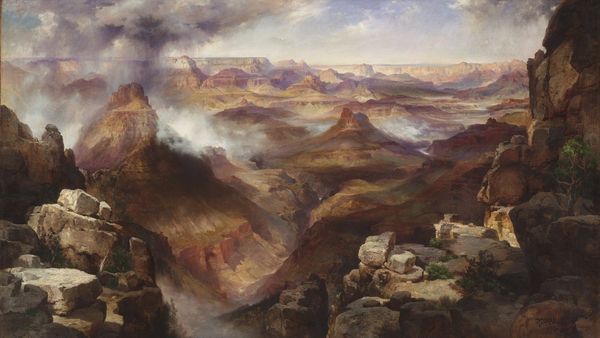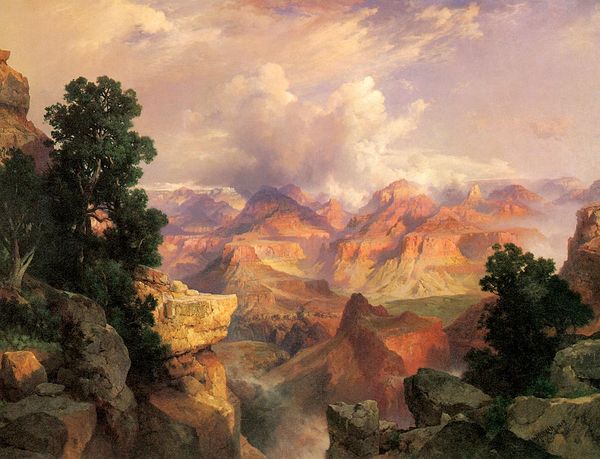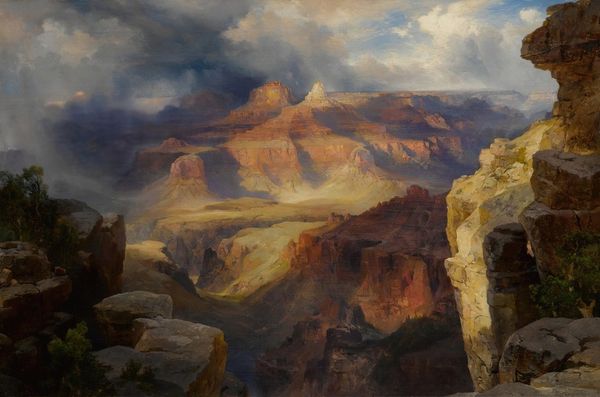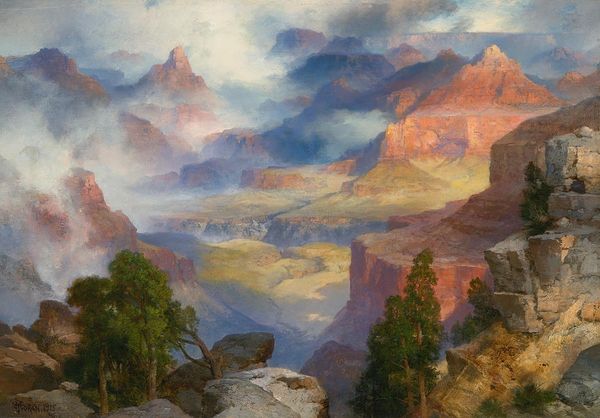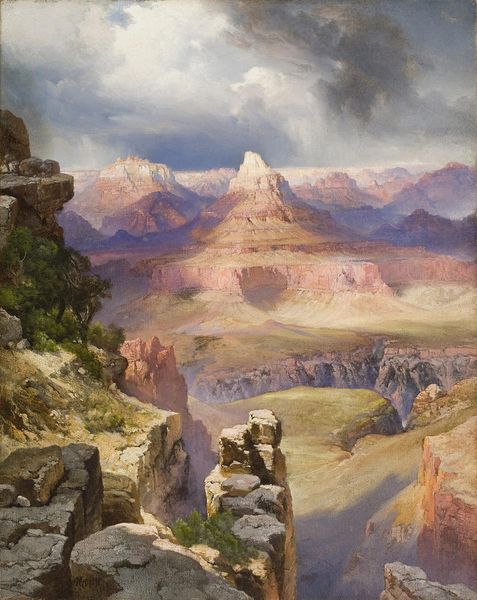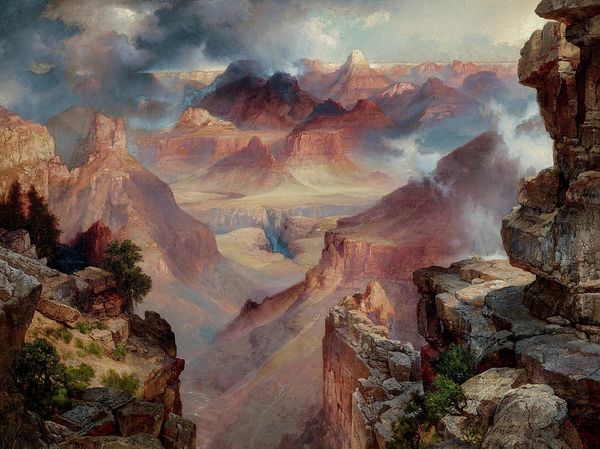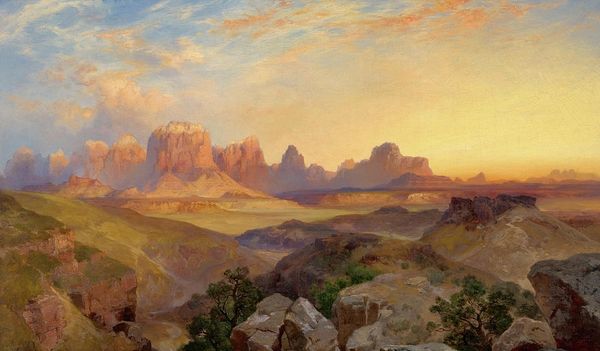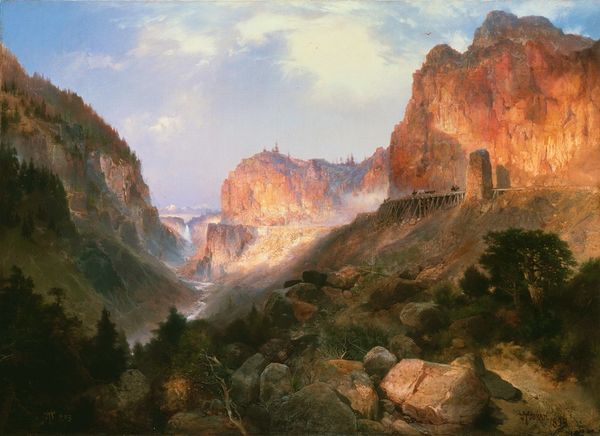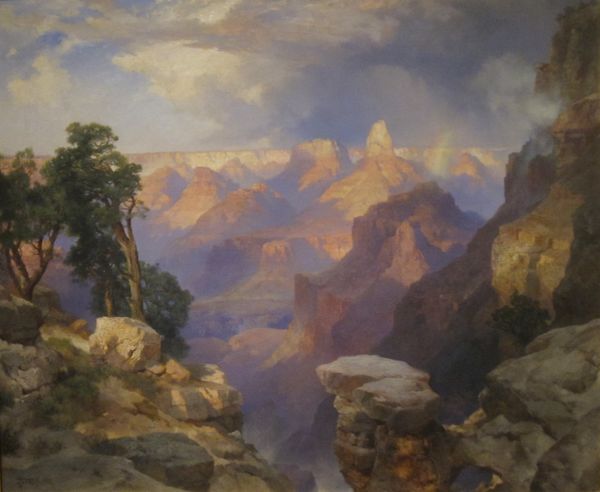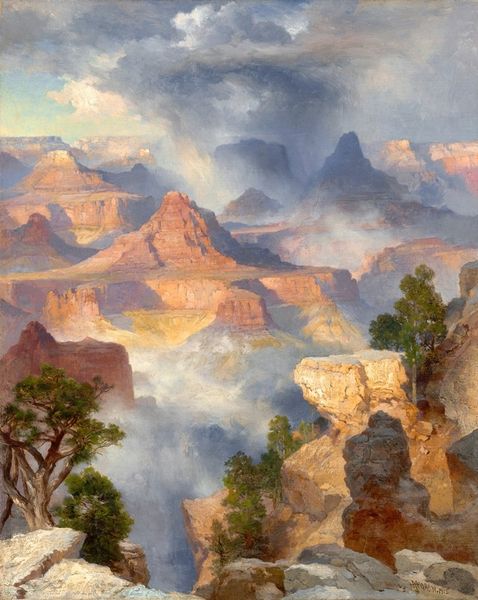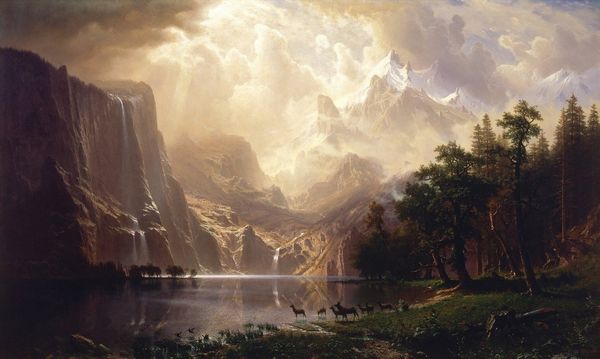
oil-paint
#
oil-paint
#
landscape
#
oil painting
#
rock
#
mountain
#
hudson-river-school
#
realism
Copyright: Public domain
Curator: Thomas Moran's 1874 oil painting, "The Chasm of the Colorado," is really breathtaking. The sheer scale and the dramatic light—what’s your initial reaction? Editor: It feels...apocalyptic, but in a strangely beautiful way. Like the world is being born and destroyed simultaneously. Curator: Well, consider the materials and the moment of its creation. Moran used oil paint, a medium allowing for rich textures and luminosity. But it's more than just skill; he was capturing a landscape newly accessible, transforming the American West into a visual commodity for Eastern audiences, inviting exploration. Editor: Exactly. We must remember this coincides with colonial expansion. Moran isn't simply depicting nature; he’s participating in a larger narrative of claiming territory, imposing a specific vision of "untouched" wilderness while displacing Indigenous populations and justifying resource extraction. That rainbow isn't just pretty; it's loaded. Curator: Interesting take. Though, focusing on pure materials—I wonder about his use of color. He contrasted the cool blues and purples of the storm with the warm, earthy tones of the canyon walls, creating a palpable sense of depth. Did he want the viewer to consider nature's power versus earth's materials? Editor: Perhaps, but that dichotomy simplifies a complicated history. The romanticized depiction of this land obscures its complex past, turning the Grand Canyon into a myth rather than a place of contested histories. Look at those tiny figures dwarfed by the landscape – a deliberate move to emphasize white male dominance. Curator: So, are you arguing he was using these paintings as advertisements for domination of nature? His composition leads us to imagine stepping right into the chasm; there is evidence the painting inspired conservation and concern about man's relationship with the natural world, such as the creation of national parks. Editor: Absolutely. But conservation often came at a cost, furthering Indigenous removal and solidifying white ownership of "protected" spaces. "The Chasm of the Colorado" thus becomes a visual tool shaping national identity while concealing the real human cost of expansion. Curator: An incisive, if somewhat disheartening reading, yes, one more example of how visual documents can reflect broader agendas... Editor: Precisely. And acknowledging these intersecting layers can empower us to approach such majestic works not with blind awe, but with the necessary critical tools.
Comments
No comments
Be the first to comment and join the conversation on the ultimate creative platform.
